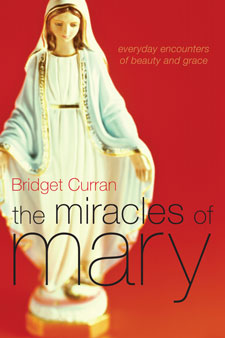Mary, Mary… Mary is an enigmatic figure indeed. In the New Testament she is present at defining moments of salvation history: at Jesus’ conception, his birth, at the cross and at the pouring out of the Holy Spirit at Pentecost.
In later church history she is presented in either non-biblical or unbiblical ways and this still persists today.
It is perhaps no surprise then that many biblically literate people today have reacted strongly to these views and that evangelicals today often say less about Mary than the New Testament, as it was noted recently in Christianity Today.
 Bridget Curran is a young writer and filmmaker who holds triple majors in History, Italian and Anthropology (Hons). She lives in Perth. She is currently researching and writing documentaries for film and television and was requested to write a book about Mary.
Bridget Curran is a young writer and filmmaker who holds triple majors in History, Italian and Anthropology (Hons). She lives in Perth. She is currently researching and writing documentaries for film and television and was requested to write a book about Mary.
Although a “cradle Catholic” as she states in the preface she “never, ever, ever wanted to write a book about Mary”.
Miracles of Mary, Curran states, aims to offer a glimpse into who Mary was and to understand why she means so much to so many people. It also examines the mysterious figure of Mary and how every age, every culture and every formal religion has interpreted her in myriad ways.
The book provides a collection of accounts from everyday people from all over the world. There are stories of silently weeping statues of Mary in Japan, apparitions of Mary in Rwanda, Yugoslavia, Portugal and Poland, and the statue of Mary in Sri Lanka that has been at the centre of a number of miracles, including at the time of the 2004 tsunami.
Throughout the book there are examples of amazingly similar stories which are recorded in different cultures and times all with Mary as the common thread. These stories are told simply and honestly and allow readers to experience these events themselves. Mary seems to appear to people in many ways, through art, and the written word, through apparitions or sometimes as presence or inspiration.
Others may view these accounts as described with scepticism or as barely credible or even hold stronger views on their validity. In my opinion, it is difficult to make judgements on such experiences.
As we think about the place of Mary, the New Testament offers this witness: we are told that Mary was a “favoured one”, a good person with a humble disposition and obedient faith.
Mary was a recipient of God’s grace. She is presented as an example of faithfulness, constancy, obedience and commitment. She is a pivotal point as a mother of great faith between Old and New Testaments with Sarah, Rachel, Hanna, Tamar, Ruth and Rahab in the line going before and she is also the daughter of Zion, a fulfillment of prophecy and salvation history. She is the one to give birth to one who is God.
We should probably consider Mary’s role in the New Testament as John considered himself in John 3:30 “He must increase but I must decrease” and we too may find that this account though wonderful and startling is quite at odds with our understanding and interpretation of Mary.























